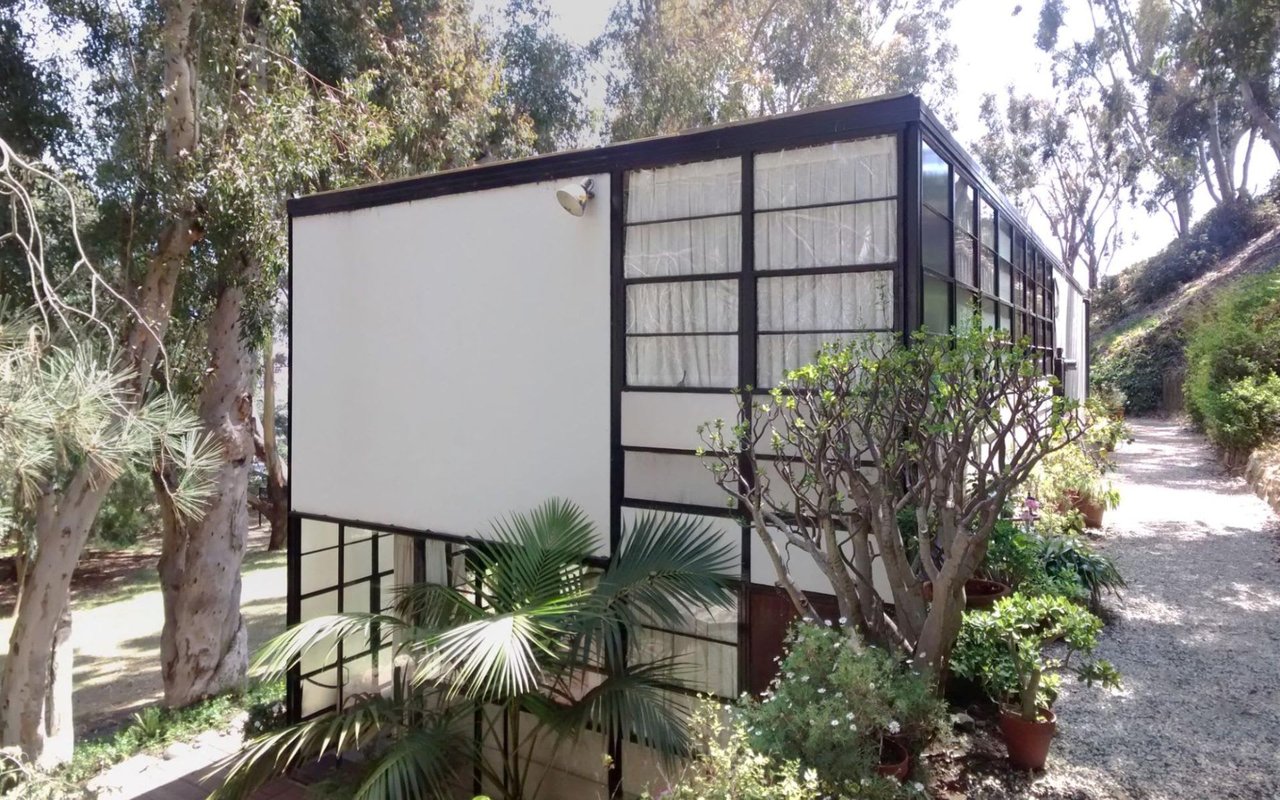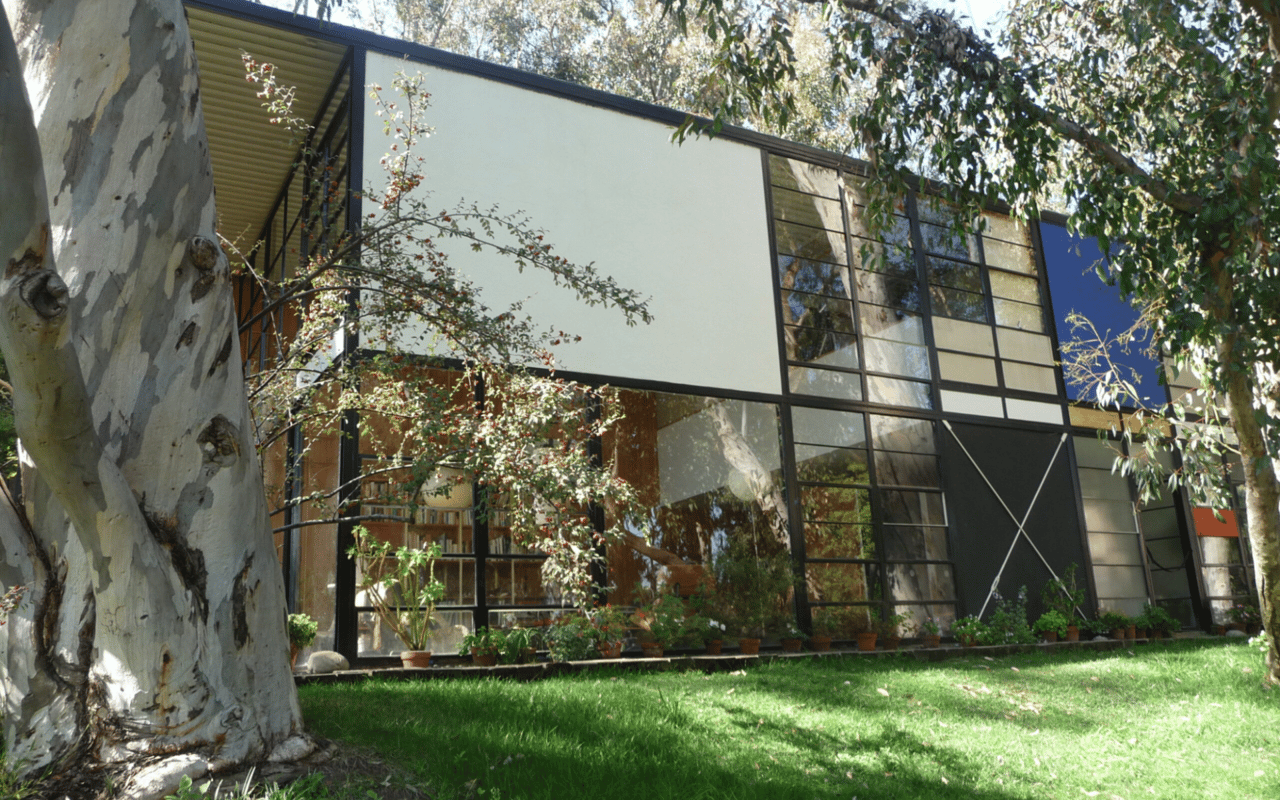The architectural world is replete with iconic figures whose work has shaped how we live and perceive and occupy space. Charles and Ray Eames stand out not only for their innovative designs but also for their profound impact on modern architecture and furniture—most famously with, in the latter category, the iconic Eames Lounge Chair and Ottoman. Their Case Study House No. 8, a testament to their visionary approach, remains one of the most celebrated examples of mid-century modern architecture.
Visionaries in Modern Design
Charles Eames, born in 1907 in St. Louis, Missouri, was an American designer whose work spanned the field of architecture and design disciplines that included furniture, industrial, graphic, and film. After studying architecture at Washington University in St. Louis, he later moved to Michigan to teach at the Cranbrook Academy of Art, where he met Ray Kaiser.
Ray Eames, born Bernice Alexandra Kaiser in 1912 in Sacramento, California, was an artist, designer, and filmmaker. She studied abstract painting with Hans Hofmann before attending Cranbrook, where she and Charles began their lifelong professional and personal partnership.
Together, Charles and Ray Eames revolutionized modern design. Their collaborative work, marked by a seamless blend of functionality, aesthetics, and innovation, is characterized by their belief in design as a solution to practical problems. They are best known for their furniture designs, which, in addition to the aforementioned Eames Lounge and Ottoman, include the Molded Plywood Chair, the La Fonda Chair, and the Stacking Chair, all of which are still celebrated as iconic pieces of modern design.
The Case Study House Program
The Case Study House Program was an experimental project initiated by John Entenza's Arts + Architecture magazine in 1945. The program's goal was to address a need for housing in the United States after World War II by promoting affordable, efficient, and modern homes designed by leading architects of the time. The program featured 36 prototype homes, each exploring new materials and construction methods to meet the needs of the modern family.
The Eameses' Case Study House No. 8, completed in 1949, is arguably the most famous of these homes. Located in Los Angeles' Pacific Palisades neighborhood, the house is often called the Eames House.
The Eames House: Case Study House No. 8
Nestled on a wooded bluff overlooking the Pacific Ocean, Case Study House No. 8 exemplifies the Eameses' philosophy of integrating nature with modern living. The house was initially designed as a home and studio for the couple, serving as a living laboratory for their design ideas.
Design and Construction
The Eames House stands as twin, two-story rectangular boxes composed of prefabricated steel and glass panels arranged in a modular, grid-like fashion. Industrial materials, a hallmark of the Case Study House program, aimed at making homes more affordable and accessible.
Exterior
Characterized by its clean lines and stark geometry, The home's exterior facade is softened by the surrounding landscape. The steel frame, painted in black and white, is punctuated by colorful panels in primary colors, reflecting the Eameses' interest in Mondrian-like abstraction. The overall structure is built into a hillside, supported by a concrete retaining wall stretching 200 feet from end to end and rising eight feet from the ground.
Interior
Inside, the house is split into two main sections: the living space and the studio. The open-plan living area is awash in natural light, thanks to the floor-to-ceiling windows that blur the line between indoors and outdoors. Signaling a flare for the dramatic in an otherwise serene home, mezzanine balconies overlook the living and studio spaces from 17 feet above. The interior decor is an eclectic mix, featuring modern and traditional elements, featuring Eames-designed furniture alongside folk art and artifacts collected by the couple.
Functionality and Flexibility
One of the defining features of the Eames House is its flexibility. The modular construction allows for easy reconfiguration of the interior spaces to suit changing needs. This adaptability was a vital aspect of the Case Study House program, emphasizing the importance of designing homes that could evolve with their occupants.
The house also incorporates innovative storage and organization solutions. Built-in cabinets and shelving units provide ample storage while maintaining a clean, uncluttered aesthetic. The studio, which housed the Eameses' design work, is a testament to their belief in the integration of work and living spaces.
Legacy and Influence
The Eames House has had a profound influence on modern architecture and design. Its innovative use of materials and thoughtful emphasis on functionality and adaptability have inspired countless architects and designers. The house is now a national historic landmark, preserved as a museum and open to the public, offering visitors a glimpse into the world of Charles and Ray Eames.
The Eameses' work on Case Study House No. 8 encapsulates their design philosophy: good design should be accessible, functional, and aesthetically pleasing. Their ability to harmonize these elements has left an indelible mark on architecture and design.
Ready to Explore More of Los Angeles' Architectural Heritage?
Charles and Ray Eames were pioneers in the world of modern design, with a legacy that continues to influence designers and architects across the globe. Their Case Study House No. 8 is a testament to their visionary approach. With its innovative use of materials, flexible design, and integration with nature, the house remains a masterpiece of mid-century modern architecture. But it's not the only architectural gem Los Angeles has to offer.
Bill & Daniel Moss have been representing architecturally significant homes for 40 years including works by Craig Ellwood, Ed Niles, David Gray, Doug Burdge and many other influential Architects throughout the years. Bill & Daniel understand that these homes are a piece of art more than just a home and those details can be seen in every aspect of the home. Bill & Daniels admiration and understanding of the nuances each of these architects used to create their independent identity is what allows them to showcase architecturally significant properties to the standard they deserve. If you would like to discuss finding a specific property or are fortunate to own one yourself, we would love to work with you.





